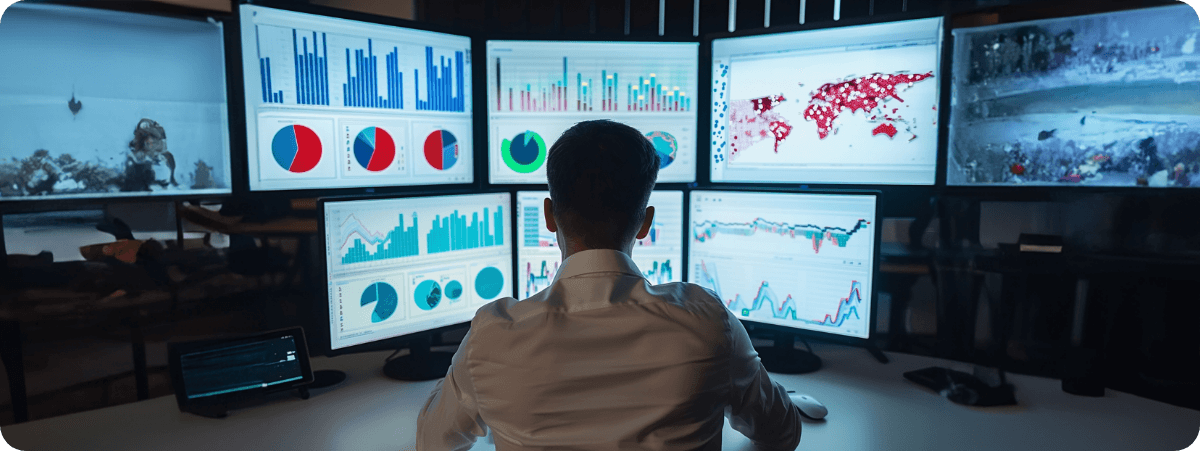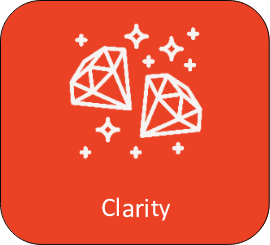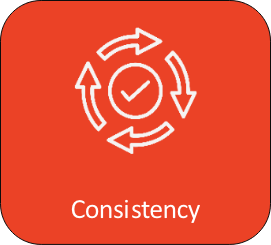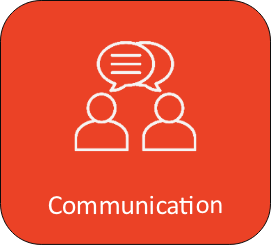Transforming Data into Compelling Stories
Exploring the Financial Times’ Visual Vocabulary
Enhancing Data Communication with Visuals
USEReady Guide to Data Storytelling

In an era where data is everywhere and anywhere, the ability to process complex information into clear, compelling visuals is more crucial than ever. Whether you’re presenting quarterly sales figures to your team, sharing research findings with your peers, or crafting a story for your blog, the right data visualization can make your insights resonate with your audience.
Imagine trying to explain the intricate trends of global temperatures over the past century without the aid of a well-crafted line chart. Or consider the challenge of comparing market shares across different regions using just raw numbers. Effective data visualization bridges the gap between raw data and understanding, transforming numbers into narratives and facts into features.
Enter the Financial Times’ Chart Doctor Visual Vocabulary.
This comprehensive guide, curated by experts in data visualization, offers a treasure trove of chart types and best practices designed to elevate your data storytelling. By leveraging this Visual Vocabulary, you can ensure that your data not only informs but also engages and inspires your audience.
In this blog, I’ll dive into what the Visual Vocabulary is and why you should use it (or at least bookmark it for easy access), explore the data relationships that are covered, and provide some guidance on how you can get started utilizing this guide to enhance your own data presentations.
Introduction to Data Storytelling
Key Visualization Techniques from Financial Times
Benefits of Using Visual Vocabulary
Practical Applications in Data Communication
Overview of the Visual Vocabulary
Choosing the Right Visualization Tools
Case Studies in Effective Data Storytelling
Enhancing Audience Engagement with Visuals
What is Visual Vocabulary?
To understand what Visual Vocabulary is, you must first understand how it was created. The Visual Vocabulary stems from the expertise of the Financial Times’ Chart Doctor team, renowned for their proficiency in data visualization. The Financial Times (or FT as some call it) has a long-standing reputation for delivering complex information in an accessible and engaging manner. The paper’s Chart Doctor team is dedicated to the art and science of data visualization, helping journalists and readers alike make sense of intricate data sets through clear and accurate visuals.
By compiling their extensive knowledge and experience of data visualization, the Chart Doctor team created Visual Vocabulary, an invaluable resource for anyone looking to enhance their data storytelling skills. This comprehensive guide includes a wide array of chart types, each suited for different types of data and storytelling purposes. From bar charts and scatter plots to treemaps and histograms, the Visual Vocabulary provides detailed explanations and examples to guide you in choosing the right visualization to convey your message clearly and compellingly.

The Visual Vocabulary enhances clarity by guiding you to the most effective chart type for your data. It helps you choose the right visualization based on data type-whether categorical, temporal, relational, or hierarchical making it easier for your audience to understand the key points without confusion.

A standardized approach to data visualization ensures consistency, especially in team projects. It helps maintain a unified style across different charts and reports, stream lining workflows and improving the overall quality and professionalism of your data presentations.

Effective visuals simplify complex data, making it more accessible and engaging. The Visual Vocabulary helps you select charts that clearly highlight trends and key insights, im proving communication and making your data more persuasive and impactful.
Why Use It?
Overview of the Data Relationships
The Visual Vocabulary outlines nine distinct data relationship types, each designed to represent different kinds of data interactions. Here’s a brief overview:
These relationship types guide you in selecting the most appropriate chart to effectively convey your data’s story.
How to Get Started
Accessing the Repository
To explore the Visual Vocabulary, visit the GitHub repository or you can download the image. The repository is well-organized, featuring a range of chart types, each with detailed explanations and examples. You can navigate it by browsing through the list of chart categories or using the search function to find specific chart types. Each chart type includes notes on its best use cases, design tips, and visual examples, making it a practical guide for creating effective data visuals.
Choosing the Right Chart
Selecting the appropriate chart type is crucial for effectively conveying your data’s story. Here are some tips to guide your choice:
- Understand Your Data:
Determine the nature of your data—categorical, temporal, relational, hierarchical, etc. This will help you match the data with the right chart type. - Define Your Message:
Consider the story you want to tell. Are you showing trends over time, highlighting correlations, or comparing quantities? Your message will guide the choice of chart. - Use the Visual Vocabulary:
Refer to the Visual Vocabulary for recommendations. For instance, use line charts for showing changes over time, scatter plots for correlations, and pie charts for part-to-whole relationships. - Test and Iterate:
Don’t hesitate to try different chart types. Visualize your data in various ways and see which one best communicates your message. Feedback from peers can also be invaluable in refining your choice.
Tools and Resources
Creating compelling visualizations requires the right tools. Here are some software and resources to get you started:
- Tableau:
A powerful tool for creating interactive and shareable dashboards. Tableau is ideal for more complex data visualizations and is widely used in business analytics. - D3.js:
A JavaScript library for producing dynamic, interactive data visualizations in web browsers. It offers great flexibility for custom and complex visualizations but requires a bit of coding knowledge. - Google Charts:
A free tool for creating simple, web-based charts. It’s easy to use and integrates well with other Google services. - Python Libraries:
Libraries like Matplotlib, Seaborn, and Plotly are excellent for creating detailed and customizable visualizations programmatically. - Online Resources:
Websites like Datawrapper, Canva, and Piktochart provide easy-to-use interfaces for designing charts and infographics without extensive technical skills.
With these resources, you can start bringing your data to life, making it easier for your audience to understand and engage with your insights.
Happy visualizing!











 Media Coverage
Media Coverage Press Release
Press Release









